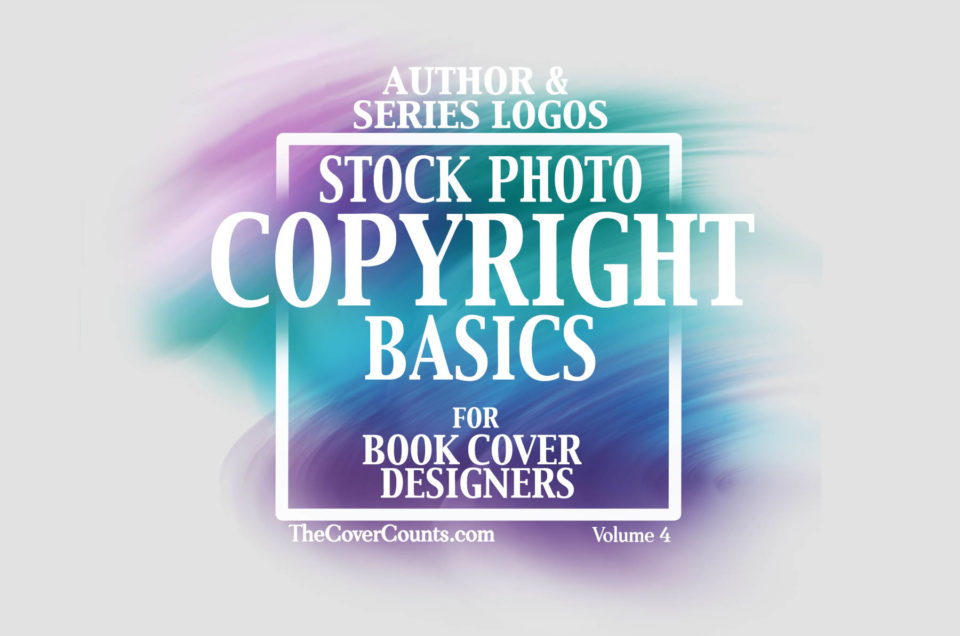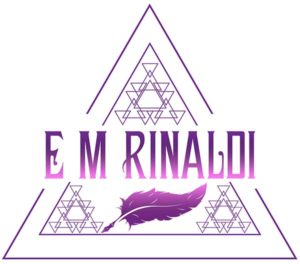One of the things I’ve noticed in many online groups where book cover designers hang out is that a lot of people haven’t been exposed to very much information about what kinds of images can and can’t be used on a book cover. So I thought I’d lay out some of the basics. Note, I am not a copyright lawyer, nor do I play one on TV. But I have been designing for more than 25 years and doing mostly book covers for almost 10. I’ve studied copyright, and I review images for one of the major stock sites. So I know a thing or two. But, still, you all know not to take my words as legal advice, right? Good. So, we can move along then. 😉
So, Let’s talk logos for a sec.
Authors have a need for logos in all kinds of situations. Many authors use a logo to build their own brand as a writer and most successful series have some kind of graphic element that ties them together that is either a specifically designed logo or contains graphic and/or type elements that function as one.
In general, there are two different levels of logo creation out there: What is currently being called “Official” logos created from all original elements, and “Unofficial” logos created from stock. It’s important to understand the difference because
1. If you have a logo made from stock, you need to make sure the stock licensing allows unofficial logo use. As far as my research has uncovered, Depositphotos is currently the *only* stock source that allows use in unofficial logos.
2. You don’t want clients to commission a logo they believe is original, only to discover when they try to file for a trademark that it was created from stock and can’t be trademarked because the original creator of the stock owns the copyright.
3. Authors shouldn’t be over-paying for one, thinking they’ve gotten the other.
“Official” Logos – Original Content
If you think your clients may ever have the need to trademark their author or series logo so they can have legal recourse to make sure that no one can have the same logo as them, you’re going to want to make sure to provide them with a 100% original design.
In addition, it’s also important to check the licensing on any fonts used in a logo prior to attempting to trademark it.
Some fonts are not available for that purpose at all and others are not unless the type design has been customized.
Below are a few examples of original logos.
Original logos by: The Cover Counts • Rock Solid Book Design • Strong Image Editing • The Illustrated Author
Original logos should cost more because…well… they’re original!
This means it’s content that no one else will have,
the level of creation is higher, and the design skill set is more extensive. Cost should reflect that.
But if legally protecting their brand is important to our clients, this is what we, as designers, should be providing.
TRADEMARK
In the world of indie publishing, there have been a series of examples of what not to try to trademark in the last couple of years (Cockygate, Dragon Slayer). But here, it’s different. In many cases, logos are designed specifically to make one brand stand out from others. So if having legal protection of its design is something important to your clients, they should look for logos that are verifiably original. They need to keep in mind that fully original logos will generally come at a higher cost because they not only take more skill, they also have a higher value because they can be trademarked. Remember that a logo cannot be trademarked unless it is free and clear of claims from other people. So also make sure that you are including full copyright transfer, in writing, to your original content logo clients (Note: Copyright transfer can NOT be legally executed with stock based logos). Designers should retain the right to display logo designs in their portfolio and marketing material, but they should pass the actual copyright for original logos on to clients so that if clients choose to use it as a registered trademark, they can.
“Unofficial” Stock based Logos
There is a never-ending supply of absolutely stunning stock out there that can be used for what some of the stock agencies call “unofficial” logos. “Unofficial” logos that use stock elements can be absolutely beautiful and serve your purposes perfectly, generally at a lower cost than a fully original logo, but not always, depending on the complexity of the design and how much customization of the stock is done.
Here are a few examples of Logos using stock.
Stock based logos by: Dreams2Media • The Cover Counts • Strong Image Editing
They are generally easier for designers to create, and since they can’t be trademarked, should come at a lower cost than logos that designers create from scratch that are unique to each client. But you have to be aware of a couple of things before providing stock logos.
- BEWARE Not every stock source allows use in ANY logo even if it won’t need to be trademarked.As of the writing of this blog post,
ONLY Depositphotos licensing definitively ALLOWS use in unofficial logos.Shutterstock and Adobe Stock definitively do NOT allow use in ANY logos, either official or unofficial. Yes, I they realize that they have actual logos offered for licensing on their site. They don’t care. Don’t use their logos as logos. It makes no sense, I know. But don’t put yourself in a position where you’re breaking licensing terms. It’s not worth it. Just don’t do it.Dreamstime has not yet responded to my request for information. I will update as I get more info. If you use a stock source other than these three, I highly recommend that you ASK them their stance on using stock in logos that do not need to be trademarked before forging ahead. - If you use stock in a logo, TELL YOUR CLIENTS that the logo you’re creating for them is NOT available to be registered as a trademark or service mark.
- The copyrights of stock images are retained by their creator. This is the person who uploaded it to the stock agency. And, as a result, logos that use stock elements cannot be trademarked. Under the correct licensing, it can be used just like any other logo that you see out there in the world, but it will never fully belong to your client.
- You will likely need to purchase the extended license for any stock elements used in logos you create. Click here to read more about what kinds of uses require an extended license. If it’s something like a series logo that is only ever intend to be printed on the books themselves, used online and on things like business cards and bookmarks, the standard license will generally be enough. But if they plan to print a stock-based logo on merchandise like T-shirts, mugs, keychains, hats, playing cards, etc., the extended license needs to be purchased for every stock element used.
Note: sometimes a stock creator will be willing to sell the full rights to one of their designs,
which would allow you to use it as a trademark or service mark, but expect that to come at a price. - When stock elements are used, remember that those same elements are available for licensing by anyone for any project. So, if logos use stock, there is always a chance that your client see something similar elsewhere, and that means both in and out of the publishing world. Hopefully, even if the same element was used in someone else’s logo, it still wouldn’t be exactly the same. Most good designers can customize stock, using more than one piece, changing colors or shape, and even making alterations to the basic design itself. So make sure your clients know exactly what they’re getting when they commission you for a logo.
How do authors know which one they have?
Authors: If you got it for cheap, it’s more likely designed using stock. You can always reverse image search your logo on google images and see if anything similar shows up, though this is not a fail-proof test.
You should absolutely ASK your designer.
![]()
The best way to not get caught with what you think is an “original logo” that is actually made from stock: stay away from places where they make you think that real design work can be acquired for five dollars (be careful at any price point…. do your research and ask questions). No matter where you go, there are many “designers” out there who will 100% charge you for an original logo, tell you that it is original, and use stock elements anyway. So cover your ass, do your own research and find designers who have built a trustworthy reputation. Make sure you’re signing a contract with your designer that specifically states whether the logo you’re getting is original or stock. It will be the only way you can hold them responsible for giving you one when you think you paid for the other.
Click here to see the rest of the Copyright for Book Cover Designer Series
• Stock image copyright basics
• When do you need an extended license?
• Author and Series Logos
• Links to Licensing details for all the main stock sources
LEARN how to protect yourself from copyright pitfalls
before you fall into one that you can’t get out of.
Have something to say? Your comments are welcome below.












